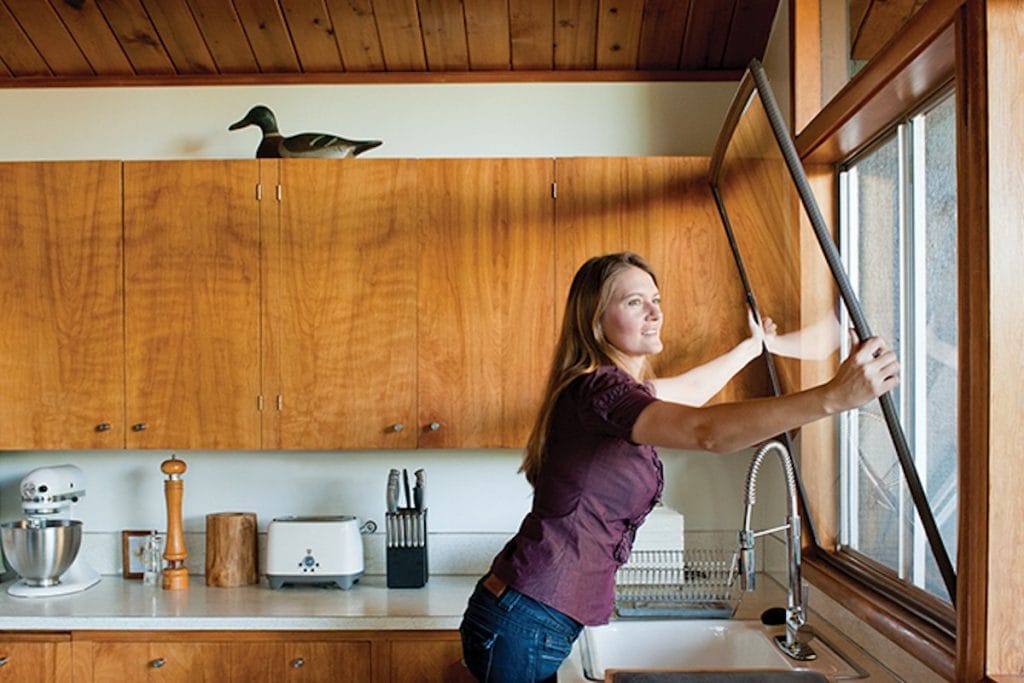The Hidden Role Windows Play in Air Quality
Let’s face it, pollutants and allergens are a part of the world we all live in, but unfortunately, we do not have a lot of control over them. However, keeping your home’s air safe and healthy, especially for allergy sufferers and those with impaired respiratory systems, is something you can take steps to control. You most likely clean, filter, and ventilate to keep your home’s air healthy, but did you know that your windows could be quietly undermining your efforts? Fortunately, there are simple and cost-effective indoor air quality solutions that can help allergy sufferers and health-conscious homeowners improve this growing concern.
Leaky and drafty windows can significantly contribute to poor indoor air quality, making a solution that cuts down on air leaks a surefire way of making your home’s air healthier. Let’s take a look at indoor air quality solutions that improve your window’s seals and in turn your indoor air quality too.
How Poor Window Sealing Lets Allergens and Pollutants In
The air is full of allergens and pollutants, including dust, pollen, mold spores, and smoke particles, which are not healthy for most people but are especially unhealthy for people who suffer from allergies, asthma, and other upper respiratory conditions. These particles are mostly invisible to the eye and can enter your home through micro gaps around windows. When more of these particles are allowed to enter your HVAC system is made to work harder, causing it to be more difficult to regulate your home’s air quality.
Standard windows and particularly those in older homes are often not enough to prevent an unhealthy level of allergens and pollutants to enter. This all adds up to looking for window upgrades that can help you with your clean indoor air strategies.

Window Inserts: A Simple, Effective Upgrade
The idea of a window upgrade may make you think of costly replacements and major renovations, but do not fret. If you are looking for how to reduce indoor allergens without the upheaval of a renovation, one simple and effective way is to install window inserts. Sometimes referred to as interior storm windows, these insulating window panels act as a way to pollen-proof windows and make easy allergy-safe window upgrades.
Climate Seal’s window inserts are a way to add removable window insulation that can help keep out allergens and pollutants. They can be custom-sized to fit your existing windows and are installed in minutes using a magnetic compression system. Once installed they work to create an airtight seal, which acts as a physical barrier against airborne irritants and up your indoor air pollution control efforts. Unlike other magnetic window inserts, Climate Seal’s compression system works to create an airtight seal without any added strips or accessories that need to be installed, which can ruin your window’s aesthetics or even damage the frames. They can also be removed as easily as they are installed.
An added bonus of Climate Seal’s airtight window inserts is they also add acoustic and thermal insulation too. This improved thermal insulation can also improve your home’s energy efficiency and save you money on your home energy bills. Lowering the level of outdoor sounds that penetrate your home’s interior and also improve your quality of life.
Another benefit of Climate Seal window inserts is their low VOC level. Volatile organic compounds (VOCs) are chemical compounds often used in manufacturing that can vaporize and release harmful compounds into the air. These compounds can exacerbate symptoms for allergy and asthma sufferers and make HVAC systems work harder.
VOC reduction in homes is therefore one goal for improving air quality, making the use of low-VOC products preferable.
Read More: Window Maintenance Tips for Fall
Health and Comfort Benefits Beyond Allergies
Keeping out allergens and pollutants is not the only health benefit of window inserts. You can gain better condensation control with inserts too. Lowering window condensation adds up to better humidity control that then helps to not only reduce foggy windows, but also mold risk, which is a health hazard and air quality problem. Having a system of mold prevention for windows can lower these issues within your home.
Window inserts can also contribute to asthma-friendly home improvements, as they help regulate a more consistent indoor temperature, which in turn reduces respiratory flare-ups.
This DIY window sealing solution can also help improve sleep and focus by providing cleaner, quieter rooms.
Where to Install for Maximum Air Quality Impact
When it comes to indoor air quality solutions, not every room necessarily requires a window insert installation. You can maximize your air quality impact by concentrating on certain rooms in your home. Healthy home insulation is especially important in bedrooms, nurseries, home offices, and medical facilities. Installing window insulation panels for allergies also work very well for homes in urban or high-pollen areas.
Why Choose Window Inserts Over Replacement Windows?
There are other home air purification alternatives to window inserts including replacement windows, but retrofit window inserts are a cost-effective and minimally invasive solution that is easier to install than alternatives and are reversible, if needed. This can make them attractive for installation in rental properties. When you add that Climate Seal window inserts are also compatible with historic properties as they are removable, do not cause any alterations or damage to be installed, and easily blend into any décor it is difficult to not see them as an ideal solution for preservation or budget-sensitive projects too.

Breathe Easier with a Simple Window Fix
If you are looking for indoor quality air solutions, window inserts can provide you with a simple fix that will have you breathing easier in no time. Window inserts are a smart, low-hassle way to enhance indoor air quality that will not break the bank whether you are looking for pollen and dust-proof window solutions, or easy ways to help your HVAC system work better, not harder.
Want to learn more about Climate Seal’s insert options? Contact Climate Seal, talk to a professional about improving your home’s air quality and request a custom quote to get you started.
FAQ
1. How do window inserts contribute to better indoor air quality?
They create an air-tight seal which prevents allergens and pollutants from seeping through micro-gaps
2. What kinds of pollutants/allergens can they block?
Window inserts can block pollen, dust particles, dust mites, pet dander, mold spores, smoke, car exhaust, and airborne contaminants.
3. Are they suitable for both modern and historic buildings?
Window inserts are basically invisible once installed and easily blend into any home décor or style.
4. Can inserts help prevent mold or humidity issues?
The air tight seal that window inserts create to keep out allergens and pollutants also helps cut down on condensation build-up, which prevents window fog and decreases humidity and mold growth.
5. How do they compare to window replacement for sealing?
Window inserts are less expensive, quicker and easier to install, and less invasive than window replacements.

